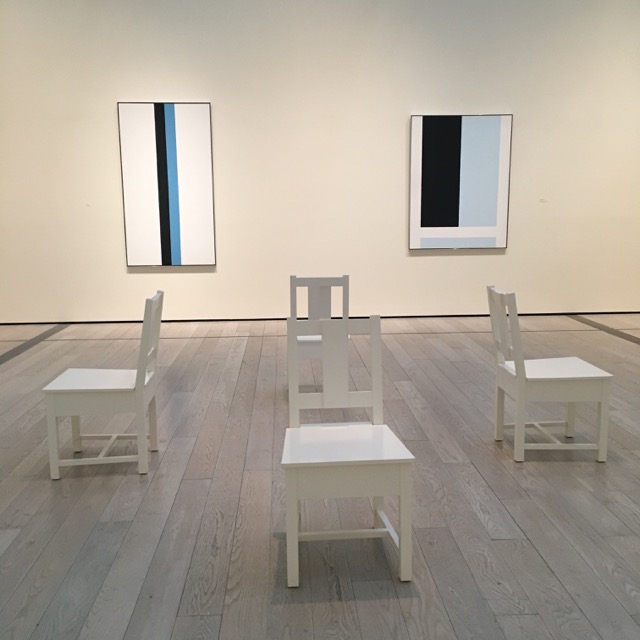 Christopher Knight of the Los Angeles Times calls John McLaughlin “possibly the most important postwar artist you don’t know”. Doesn’t that make you curious?
Christopher Knight of the Los Angeles Times calls John McLaughlin “possibly the most important postwar artist you don’t know”. Doesn’t that make you curious?
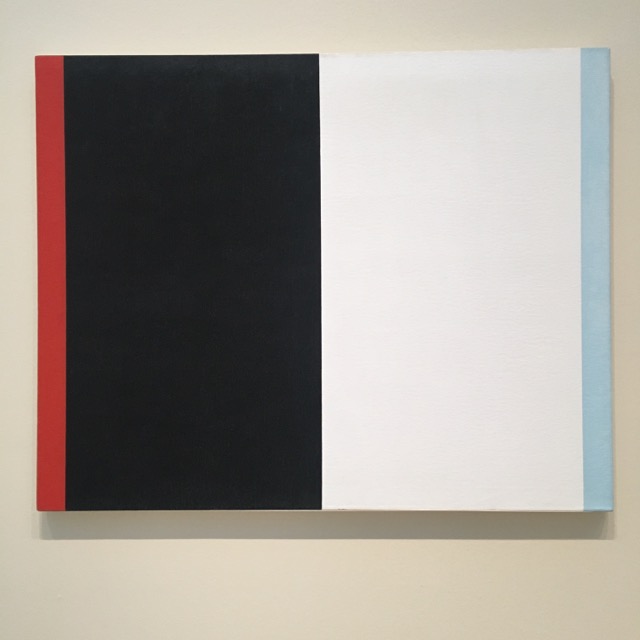 His work is simple – rectangles layered on top of each other – yet, the space offered up to the viewer is uncomplicated and, at first glance, simplistic. A bit more investigation yields this: influenced by Japanese aesthetics, McLaughlin invites you to contemplate your own consciousness, offering a serene space for thought. Is he a great, under-recognized painter? LACMA and many artists who were influenced by him seem to think so. Come decide for yourself by visiting John McLaughlin Painting: Pure Abstraction at LACMA before the show closes on April 16, 2017.
His work is simple – rectangles layered on top of each other – yet, the space offered up to the viewer is uncomplicated and, at first glance, simplistic. A bit more investigation yields this: influenced by Japanese aesthetics, McLaughlin invites you to contemplate your own consciousness, offering a serene space for thought. Is he a great, under-recognized painter? LACMA and many artists who were influenced by him seem to think so. Come decide for yourself by visiting John McLaughlin Painting: Pure Abstraction at LACMA before the show closes on April 16, 2017.

McLaughlin’s focus is on the Japanese theory of ‘ma’ – which is defined as the emptiness between two forms. Another way to say it is that he focuses on the void – and that’s what your eye should focus on in this show. What is in between the color fields? Which layers of paint do you suppose he put on the canvas first? Which comes forward, and which fades back?
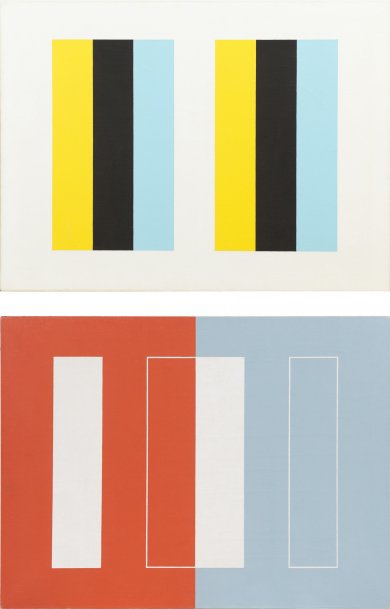
John McLaughlin, #26, 1961
When you walk through the galleries, be sure to note the chairs – they’re meant to be sat in, and you can move them around at your leisure. Designed by Roy McMakin, they mimic some of the forms of the paintings. Again, mind the void!
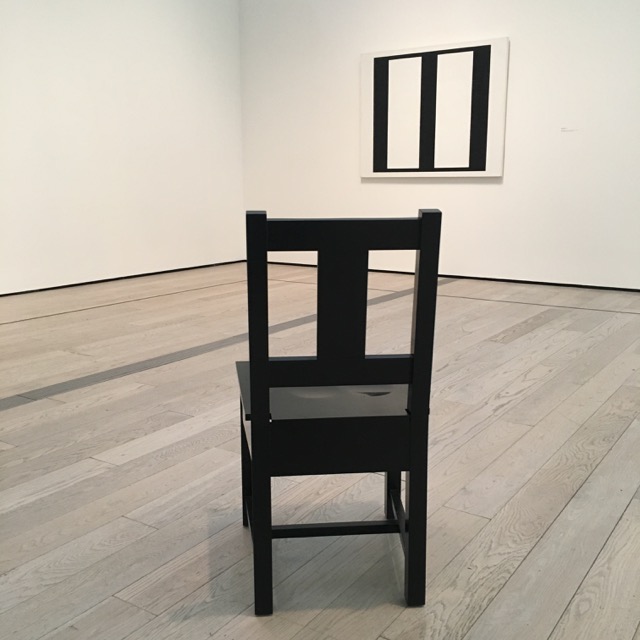
McLaughlin spent time in the Museum of Fine Art Boston’s Japanese painting halls when he was a child. He married into the family of transcendentalists (a grandniece of Ralph Waldo Emerson), traveled in the East and collected Japanese prints, visited Manzanar, fought in the war, and settled in Dana Point where he started to paint at 48.
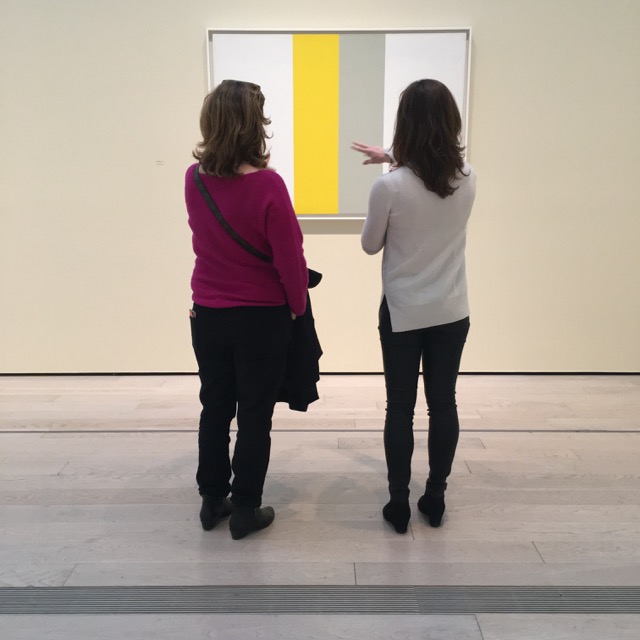
I learned about the artist from Lauren Bergman, one of curators of the show, who helped me to appreciate the subtle beauty of the paintings, and detailed the process of putting on the first retrospective of an artist who is relatively undiscovered – indeed the Los Angeles Times article chronicles that no other museums in the nation are interested in this show, despite his profound influence on the CA Light and Space movement.
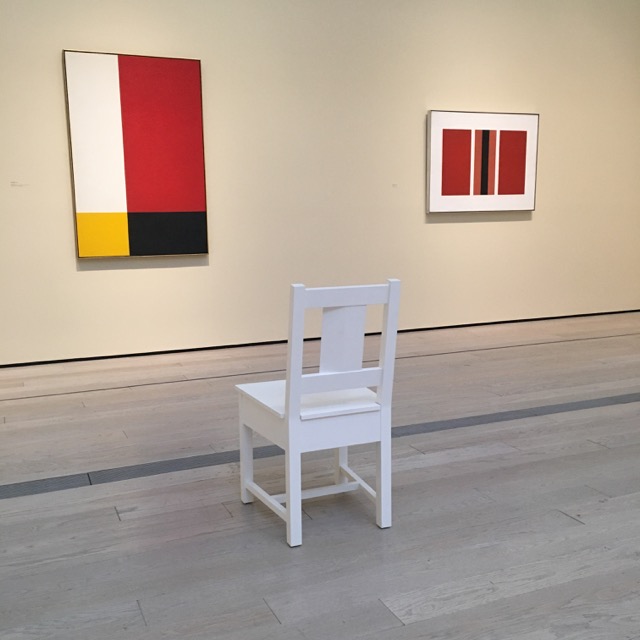
His canvasses call to mind Piet Mondrian, of course. But looking at this image of a Japanese home helped me understand what interested McLaughlin. The flatness. The void. The pure design.
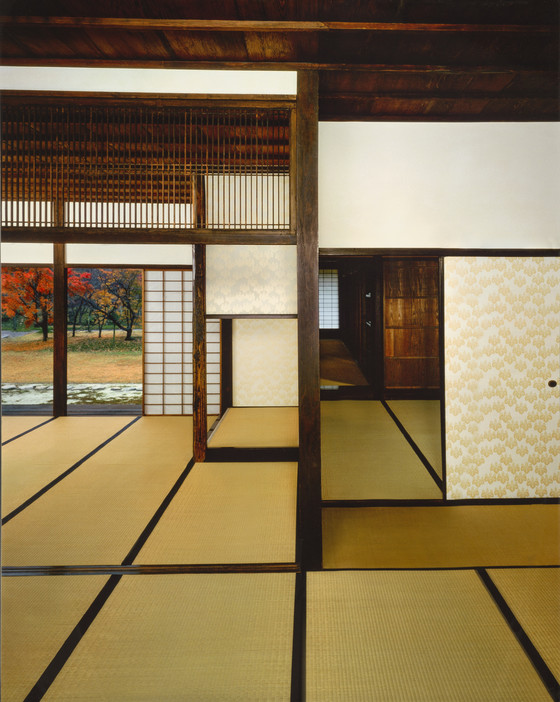
Main Room, Left, the Hearth Room, Right, of the Old Shoin, Viewed from the North-east, Second Room in the Foreground
Do you see how McMakin added a tiny bit of yellow to his chair back below? Playful and orderly, at once.
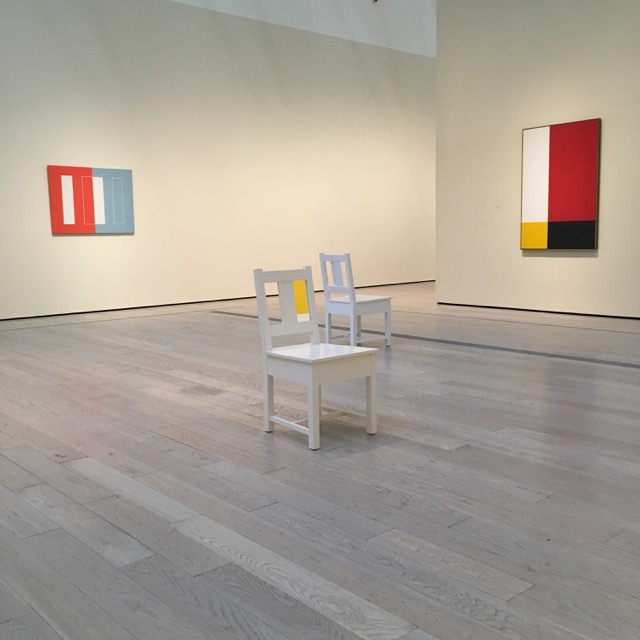
Do yourself a favor and see this show. Perhaps, even buy the book, and learn more about McLaughlin’s life and aesthetic. The rest of the world has yet to truly appreciate this Southern California treasure, so be sure to put this on your I’m Lucky to be an Angeleno list. And, when in the galleries be sure to sit down and spend a few moments in pleasurable contemplation.
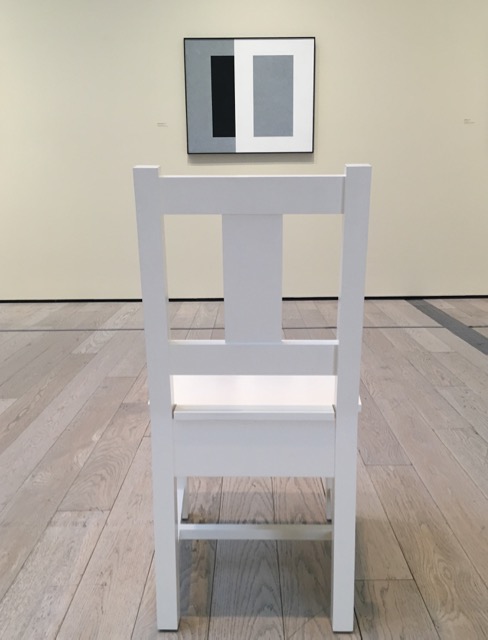
Here is the full review of the show from the Los Angeles Times, which gives a sense of McLaughlin’s place in the history of the Southern California art scene, and includes a link to an hour-long Getty Institute lecture on Japanese Zen Buddhism and Impossible Painting.

